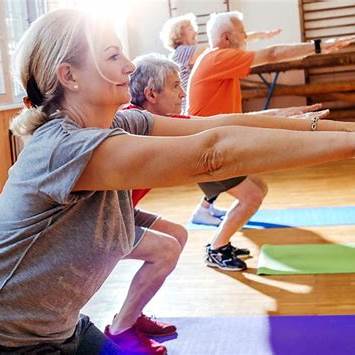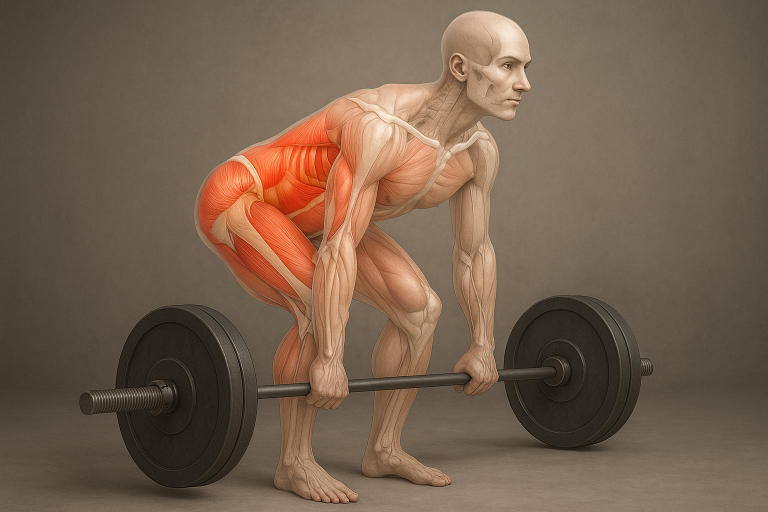When people think of squats, they often imagine heavy barbells, professional athletes, or intense gym workouts. But the squat is much more than a weightlifting exercise. It is one of the most fundamental human movements: one we rely on every day, often without realising it. From getting up out of a chair, bending down to pick something up, or even sitting on the toilet, the squat underpins so many of the daily actions that keep us independent.
For people over 40, incorporating squats into an exercise programme can be a game-changer. Done correctly and at the right intensity, squats can improve mobility, strengthen muscles, protect joints, and reduce the risk of falls. They can even help manage chronic conditions such as arthritis, Parkinson’s disease, and stroke recovery. This makes squats one of the most valuable and versatile tools in functional fitness, the approach to training that focuses on improving real-life movement.
In this article, we’ll explore why squats are essential after 40, how they can be adapted to different needs and health conditions, and how to include them safely in your exercise routine.
The Functional Fitness Approach
Functional fitness refers to exercises that train your body for activities you perform in everyday life. Instead of isolating muscles, functional training uses compound movements, like squats, that mimic real-world actions.
Why is this important after 40?
- Muscle mass and strength naturally decline with age (sarcopenia).
- Balance and coordination become less reliable, increasing the risk of falls.
- Joint stiffness or reduced mobility can make everyday activities harder.
- Many chronic conditions become more common, and exercise must be adapted to manage them safely.
Squats fit perfectly into this philosophy. They are a whole-body movement, requiring coordination between your legs, core, hips, and even your upper body. Training squats doesn’t just build strength; it teaches your body to move better, in a way that directly translates into improved independence and confidence.
Why Squats Are So Beneficial After 40
- Maintaining and Building Muscle
Muscle mass peaks in your 30s and then starts to decline unless it’s actively maintained. Squats train the largest muscles in the body, quadriceps, hamstrings, and glutes, while also engaging the core. Stronger muscles make daily activities easier and help prevent injuries.
- Improving Joint Health
A common misconception is that squats are “bad for your knees.” In reality, research shows that correctly performed squats can strengthen the muscles supporting your knees and hips, improve joint lubrication, and reduce stiffness. For those with arthritis, low-load squats can be joint-friendly and actually reduce pain.
- Enhancing Balance and Coordination
Squats train the body’s proprioception (awareness of position and movement) and stability. This reduces fall risk, a major concern after 40 and particularly in later life.
- Boosting Metabolism and Bone Health
Because squats recruit so many large muscles, they are metabolically demanding. This means they can help with weight management, blood sugar regulation, and cardiovascular fitness. They also place healthy stress on bones, stimulating bone density, an important factor in preventing osteoporosis.
- Supporting Neurological Health
Exercises like squats improve communication between the brain and muscles. For people with Parkinson’s disease or recovering from a stroke, this kind of movement retraining is invaluable.
Squats and Specific Health Conditions
Squats for People with Arthritis
Arthritis often brings pain, stiffness, and reduced range of motion in the joints. Avoiding movement may feel instinctive, but it often worsens the problem.
- How squats help: They strengthen the muscles around affected joints, which improves stability and reduces the load directly on the joint. Controlled, low-impact squats can help maintain mobility and improve confidence.
- Adaptations: Chair squats (sitting down and standing up), wall-supported squats, or shallow squats within a pain-free range. Light resistance bands can be added gradually to build strength.
Squats for People with Parkinson’s Disease
Parkinson’s affects motor control, leading to rigidity, balance issues, and difficulty with gait. Exercise is one of the best non-pharmacological treatments.
- How squats help: Squats target the major muscles involved in walking, rising from a chair, and stabilising balance. They also promote neuromuscular coordination, which is vital in Parkinson’s.
- Adaptations: Wider stance for stability, holding a support (e.g. rail or chair) for balance, slow and deliberate tempo to reinforce motor control. Group exercise classes have also shown to boost motivation and adherence.
Squats for Stroke Recovery
After a stroke, many people experience weakness or partial paralysis on one side, poor balance, and reduced mobility.
- How squats help: Squats retrain the nervous system to coordinate both sides of the body. They strengthen the lower body for essential tasks such as standing up, walking, and transferring.
- Adaptations: Assisted squats with support bars, step-to squats (stepping down into partial range), or supported sit-to-stand practice. Repetition and gradual progression are key for neuroplasticity (the brain’s ability to rewire).
Practical Ways to Include Squats into an Exercise Programme
The beauty of squats is that they can be scaled for every ability level. Here are some progressions:
- Sit-to-Stand: Start from a chair, stand up, and sit back down. This directly mirrors daily function.
- Supported Wall Squat: Lean against a wall with a stability ball behind your back, lowering gently to a comfortable depth.
- Bodyweight Squat: Stand with feet hip-width apart and lower down as if sitting in a chair, keeping heels on the ground.
- Goblet Squat: Hold a light weight (like a dumbbell or even a household object) close to the chest to add resistance.
- Split Squat: One foot forward, one back, lowering into a lunge. Builds unilateral strength and balance.
- Loaded Squats: For those with more training experience, barbell or kettlebell squats add further challenge.
Key safety tips:
- Warm up before squatting (gentle mobility drills).
- Keep movement within a pain-free range.
- Focus on form: chest lifted, heels down, knees tracking over toes.
- Progress gradually: quality over quantity.
- Stop if you experience sharp pain (different from normal muscle exertion).
Case Examples
- Margaret, 68, with arthritis: After incorporating sit-to-stand squats and supported wall squats twice a week, she reported less stiffness when climbing stairs and greater confidence in moving around her home.
- James, 62, post-stroke: Starting with assisted squats and progressing to partial bodyweight squats, he regained the ability to stand from a chair without help, improving his independence.
- Linda, 57, early Parkinson’s: Regular squats helped maintain her balance and reduce freezing episodes when standing up.
Squats and Independence
Ultimately, squats are about more than fitness. They are about independence. The ability to get up from a chair, use the toilet unaided, climb stairs, or pick something up off the floor—these are the everyday victories that define quality of life.
By practising squats in a safe, progressive way, adults over 40 can maintain these abilities well into later life, reducing reliance on others and staying active in their communities.
For people over 40, and particularly those living with conditions such as arthritis, Parkinson’s, or stroke recovery, the squat is one of the most valuable exercises available. It builds strength, improves mobility, supports neurological health, and underpins the movements we need for daily independence.
The best part? Squats don’t require fancy equipment or a gym membership. With the right guidance, they can be done almost anywhere, by almost anyone, in a way that is safe and tailored to individual needs.
Incorporating squats into your exercise programme isn’t just about fitness. It’s about investing in your future independence, confidence, and quality of life.


